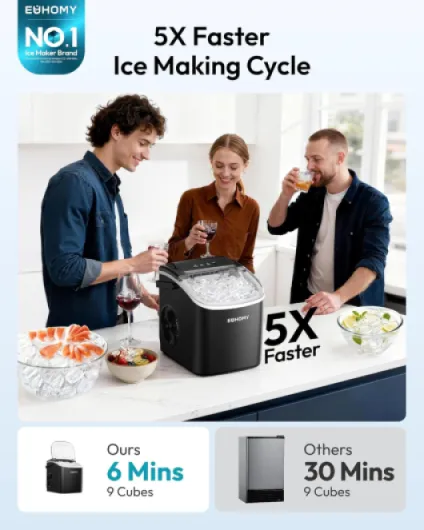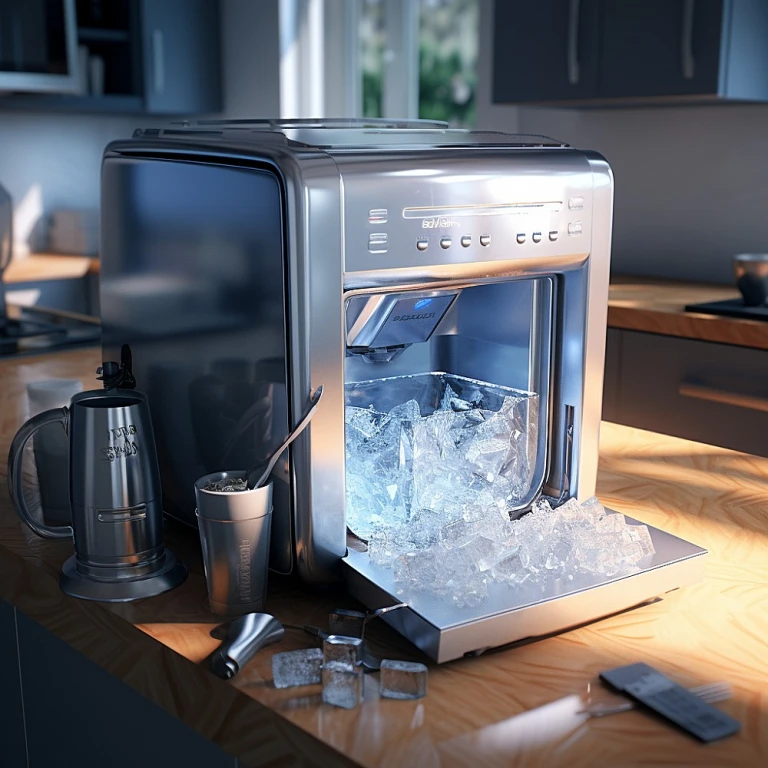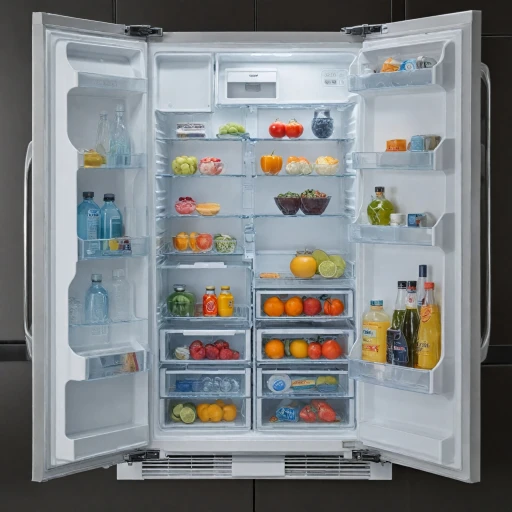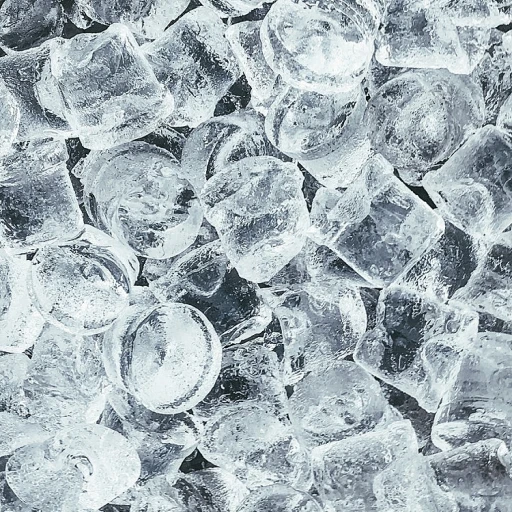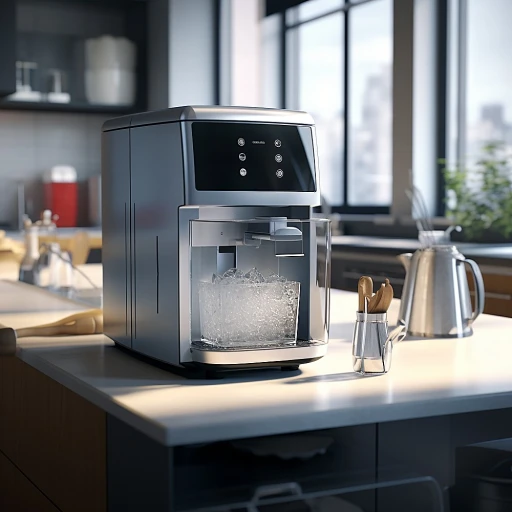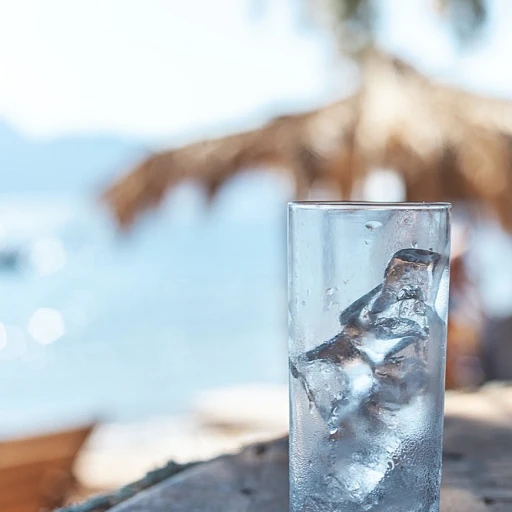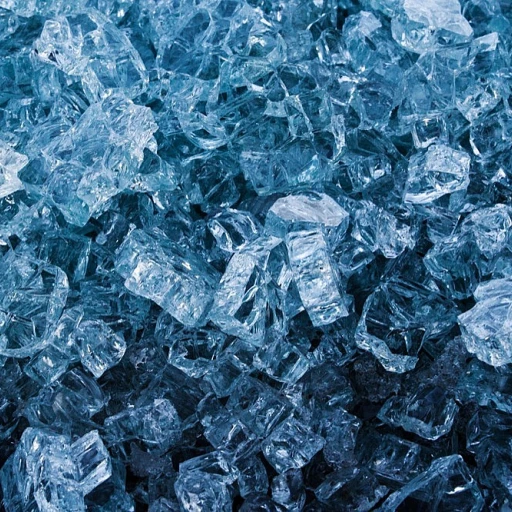
Understanding Common Ice Maker Problems
Identify the Root of Your Ice Maker Glitches
Ice makers, like any other household appliance, encounter their fair share of hitches. Pinpointing the exact problem can prove to be a bit challenging if you're unfamiliar with the mechanism. Here’s a breakdown of the most frequently encountered ice maker problems and their likely causes to help you troubleshoot effectively.
- Insufficient Ice Production: One of the most common issues users face is seeing scanty ice output. This can often be attributed to temperature settings not being optimal or a clogged filter.
- Leaking Water: If you notice water pooling around your ice maker, it could be due to a compromised water inlet valve or loose tubing, potentially leading to larger messes if not addressed.
- Off-flavored Ice: An unpleasant taste or odor in your ice may arise from lingering impurities in a neglected or uncleaned filter, affecting the overall quality of the ice produced.
- Ice Cubes Not Ejecting: When ice cubes remain stuck in the tray, it may point towards a faulty thermostat or an iced-over ejector mechanism that disrupts the seamless production of your ice.
Understanding these elemental issues arms you with the knowledge necessary for basic problem-solving, and for more persistent dilemmas, diving into detailed troubleshooting tips might be the next prudent step.
Troubleshooting Tips for Ice Maker Malfunctions
Identifying the Root of Ice Maker Issues
When your ice maker stops working, it can be frustrating. But before you panic, there are several common issues you can check. Start by examining the water supply. Ensure the water inlet valve is open and the inlet tube isn't blocked. A clogged tube can prevent water from reaching the ice maker, halting ice production.
Inspecting the Control Arm and Ice Bin
The control arm is another critical component. If it's in the wrong position, the ice maker might think the ice bin is full and stop making ice. Adjust the arm to see if this resolves the issue. Also, check if the ice bin is properly seated in the refrigerator freezer as misalignment can disrupt the ice-making process.
Checking the Water Filter and Freezer Temperature
A dirty water filter can restrict water flow, affecting ice production. Replace the filter regularly to maintain optimal performance. Additionally, ensure the freezer is set to the correct temperature. If it's too warm, the ice cubes won't freeze properly. Aim for a temperature around 0°F (-18°C).
Examining the Water Inlet Valve
The water inlet valve controls the flow of water into the ice maker. If it's faulty, the ice maker won't fill with water. Listen for a buzzing sound when the ice maker is trying to fill. If you don't hear it, the valve might need replacement. For more detailed guidance, refer to this comprehensive guide.
Addressing Frozen Inlet Tubes
Sometimes, the inlet tube can freeze, blocking water from entering the ice maker. If you suspect this, carefully thaw the tube using a hairdryer on a low setting. Be cautious not to melt any plastic components.
By following these troubleshooting tips, you can often resolve common ice maker issues without needing professional help. However, if problems persist, it might be time to consider the advice in the next section.
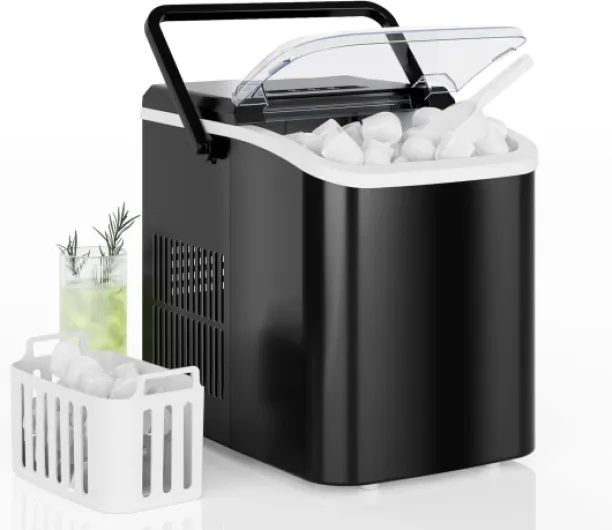
- + Fast Ice Production: 9 bullet ice cubes in just 6 minutes
- + Self-Cleaning Function: Easy maintenance
- + Portable: Ideal for home, kitchen, RV, and camping
- + Compact Design: Saves space on countertop
- + Quiet Operation: Doesn't disturb your environment
Maintenance Practices to Prevent Ice Maker Issues
Regular Cleaning for Optimal Performance
Regular cleaning is essential in maintaining your ice maker's performance and prolonging its lifespan. Ensure you unplug the appliance before cleaning and follow the manufacturer's instructions. Clean the ice bin and the inlets to prevent build-up, and pay special attention to the water filter, replacing it as recommended.Inspecting and Replacing Parts
Frequently inspect components such as the water hose and water inlet valve for wear or blockages that could lead to issues. When parts appear damaged or worn, prompt replacements can prevent bigger problems. For more detailed guidance, check out how these components can affect your ice maker’s functionality and necessary steps to replace them here.Adjusting Temperature and Water Settings
Ensure your ice maker's thermostat and water settings are optimized. Correct temperature settings can significantly impact ice production and quality. If your ice maker connects to a water supply, make sure the water pressure aligns with the manufacturer's specifications.Safe Storage of Ice Maker
When not in use, proper storage of your ice maker can prevent unnecessary wear and tear. Store it in a dry, cool place and ensure it’s thoroughly cleaned and dried before putting it away. This practice reduces the risk of mildew and internal corrosion. Adopting these prudent maintenance practices will help you minimize the need for unexpected repairs and keep your ice maker running smoothly for years to come.When to Call a Professional for Ice Maker Repairs
Is It Time to Call in the Pros?
Even with the most diligent maintenance practices, there are situations where professional help cannot be avoided. Recognizing these moments is crucial to prevent further damage to your ice maker and ensure your appliance continues to function efficiently.
- Loud or Unusual Noises: If your ice maker starts making grinding or banging sounds, it could be a sign of a mechanical issue. At this point, it may be time to consult a professional.
- Water Leakage: Water pooling around your ice maker points to a problem, likely stemming from faulty connections or internal malfunctions. A technician can accurately diagnose and repair leaks to prevent water damage.
- Electrical Issues: If your ice maker is tripping breakers or you notice electrical irregularities, professional assistance is necessary to ensure safe and proper handling.
- Consistent Malfunctions: When troubleshooting efforts fail to resolve persistent issues, expert evaluation is often the best course of action. An experienced technician can identify root causes that may not be obvious to the untrained eye.
Ultimately, knowing when to call a technician is essential in maintaining the longevity and functionality of your ice maker. If you find navigating repair services daunting, consider reading about finding reliable repair services to make an informed choice.
Remember, regular maintenance is your first line of defense in preventing issues, but when problems do arise, don't hesitate to seek expert help. Proper care and timely intervention are key to ensuring your ice maker remains a reliable part of your kitchen arsenal.
Choosing the Right Ice Maker for Your Needs
Identifying Your Ice Needs
Before diving into the world of ice makers, it's crucial to determine what you need from your ice maker. Consider the volume of ice you require daily. If you entertain often or have a large family, a high-capacity ice maker might be necessary. For smaller households, a compact model could suffice.
Types of Ice Makers
There are several types of ice makers to choose from, each with its own benefits:
- Built-in Ice Makers: These are ideal for those who need a steady supply of ice. They are installed under the counter and connect directly to the water supply.
- Portable Ice Makers: Perfect for those who need flexibility. These units are compact and can be moved around easily, making them great for parties or outdoor events.
- Refrigerator Ice Makers: Many modern refrigerators come with built-in ice makers. These are convenient but may not produce as much ice as standalone units.
Key Features to Consider
When selecting an ice maker, pay attention to these features:
- Ice Production Rate: Check how much ice the maker can produce in a 24-hour period.
- Ice Cube Size and Shape: Some models offer options for different sizes and shapes of ice cubes.
- Water Filter: A good water filter ensures clean ice and can prevent issues with the water inlet and ice production.
- Control Arm: This feature helps manage the ice production by stopping it when the ice bin is full.
Installation and Maintenance
Consider the installation process. Built-in models require a water supply connection, so ensure you have access to a water inlet. Maintenance is also key to keeping your ice maker in top condition. Regularly check the water filter and control arm to avoid malfunctions. Refer to the troubleshooting tips and maintenance practices discussed earlier to keep your ice maker running smoothly.
Budget Considerations
Finally, set a budget. Ice makers come in a wide range of prices, so it's important to find one that fits your financial plan without compromising on essential features.
Frequently Asked Questions About Ice Maker Issues
What should I do if my ice maker stops making ice?
If your ice maker suddenly stops producing ice, start by checking the water supply. Ensure the water inlet valve is open and the water line is not kinked or frozen. Examine the control arm to see if it’s in the correct position, allowing ice production. If these basic checks don’t resolve the issue, refer to the troubleshooting tips discussed earlier to identify potential malfunctions.
Why is my ice maker producing small or hollow ice cubes?
Small or hollow ice cubes often indicate insufficient water flow. Check the water filter to see if it needs replacement, as a clogged filter can restrict water supply. Additionally, inspect the water inlet valve and inlet tube for any blockages. Ensuring proper water flow will help in achieving full-sized ice cubes.
How often should I clean my ice maker?
Regular maintenance is crucial for optimal ice maker performance. Cleaning the ice bin and water filter every six months is recommended. This practice helps prevent build-up that can affect ice quality and production. For more detailed maintenance practices, refer to the maintenance section.
What causes ice to taste or smell bad?
Ice with an unpleasant taste or odor can result from a dirty water filter or ice bin. Ensure the water filter is replaced regularly and the ice bin is cleaned to prevent contamination. Additionally, check the water supply for any impurities that might affect the ice quality.
When should I consider replacing my ice maker?
If your ice maker frequently malfunctions despite regular maintenance and troubleshooting, it might be time to consider a replacement. Evaluate the cost of repairs versus the price of a new unit. Choosing the right ice maker for your needs can save you time and money in the long run.
-logo-retina.png)
